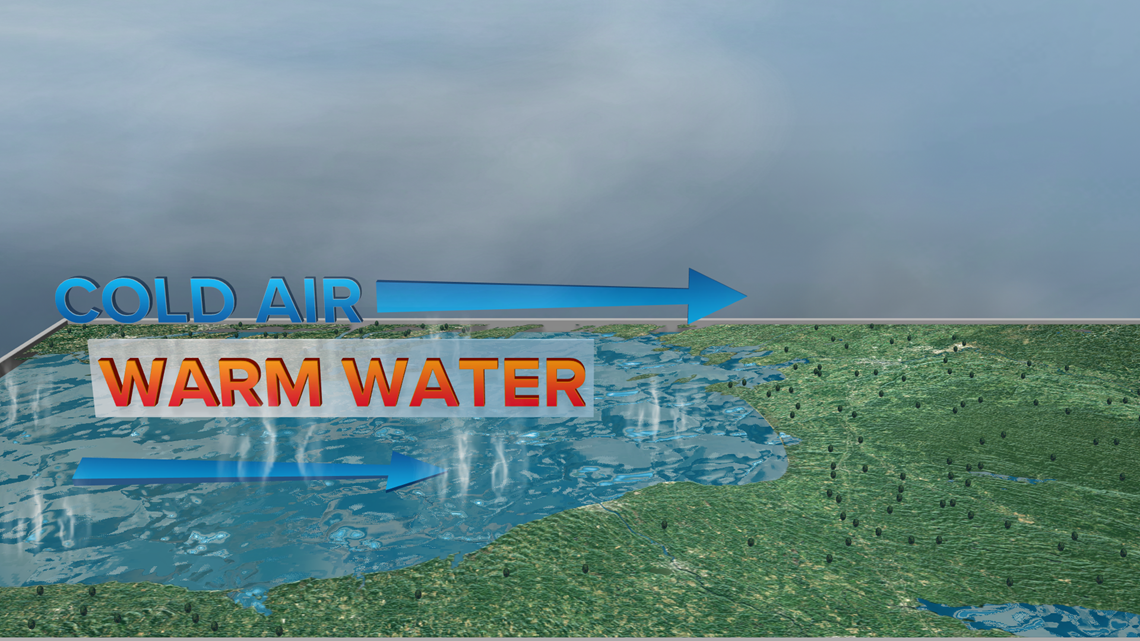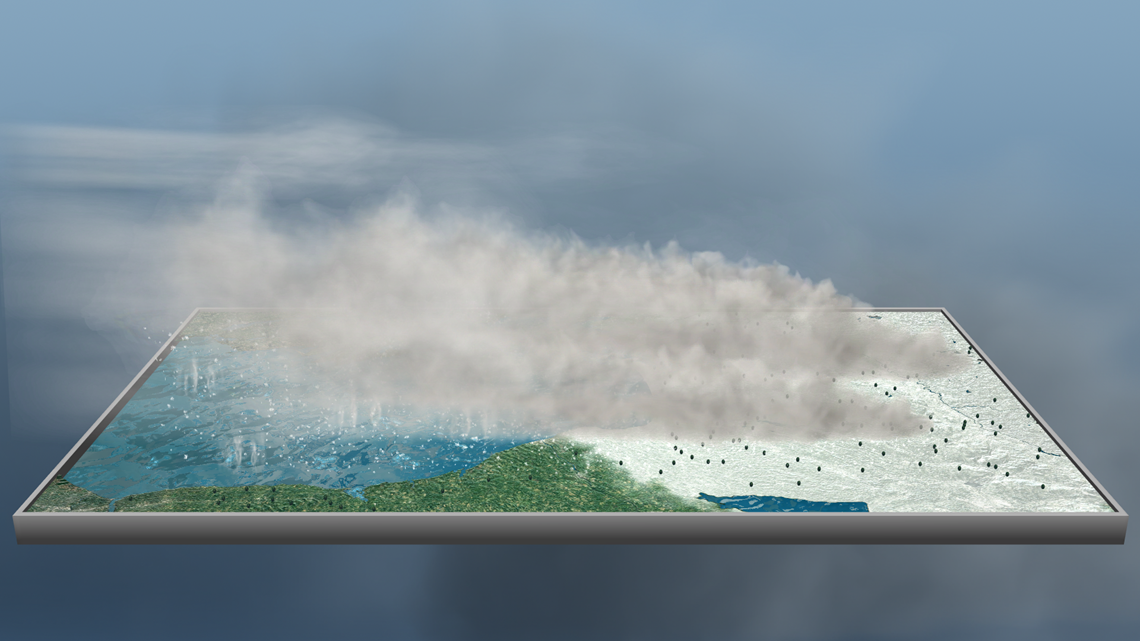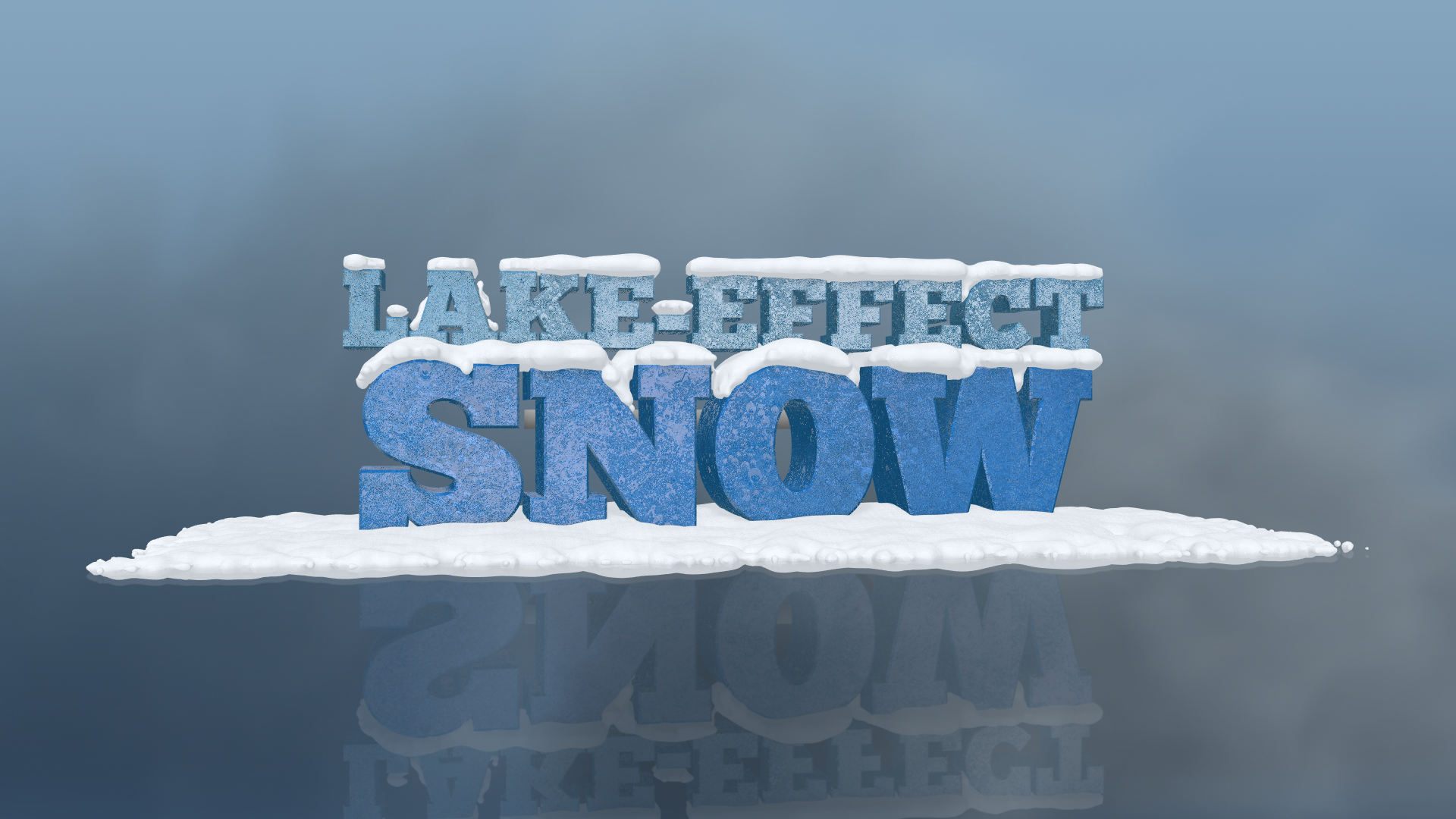GRAND RAPIDS, Mich — Lake effect snow is a phenomenon that is well known in West Michigan. It can occur anytime from early November all the way through early February.
Let’s break it down!
When the wind blows cooler / dry air over the relatively warmer water, like our unfrozen lakes in the early winter, that air will warm, fill with moisture, and rise. It will eventually rise high enough away from the lake that the air will once again cool. Colder air cannot hold as much moisture as warm air. This causes the moisture to condense and snow or rain to form.
Meteorologists forecast lake effect snow by making sure the wind is flowing from cold Canadian air and the temperature of that air is about 26° F colder than the temperature of the lake.


The amount of snowfall we receive is determined by the strength of the wind and fetch. Fetch is the distance that the air will have to travel across the lake. The larger the fetch, the longer the time a cloud can spend over the lake. That means the cloud will fill with more moisture and can snow longer in a particular spot. This is why some lake effect snow events have higher snowfall totals than others.
Lake effect snow often forms in long bands. Under these long bands, there can be heavy snowfall. The conditions must be just right, though. For example, if the variables do not align, even just a few short miles away, lake effect snow will not occur.


The entire process comes to end as soon as the lakes begin to freeze over. Michigan, then, has to rely on large-scale low-pressure systems to bring any other snowfall.
In West Michigan, lake-effect snow trends have been changing. Some are receiving more snow in recent years, while others are declining.
Meteorologist Laura Hartman breaks down these details and the results are surprising!
RELATED: Arctic Air Dives Into West Michigan
►Make it easy to keep up to date with more stories like this. Download the 13 ON YOUR SIDE app now.
Have a news tip? Email news@13onyourside.com, visit our Facebook page or Twitter. Subscribe to our YouTube channel.

